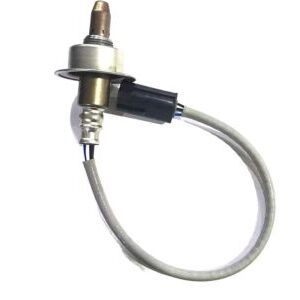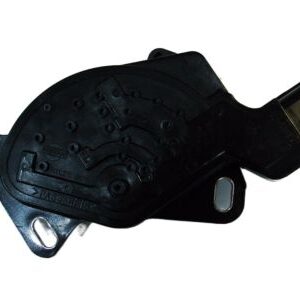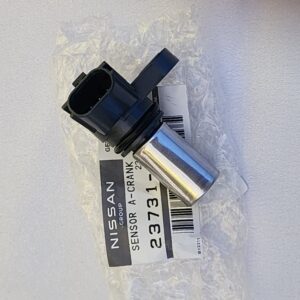Title: Crankshaft Sensors: The Precision Pulse of Engine Performance
In the intricate symphony of an automotive engine, where every movement is orchestrated with precision, the crankshaft sensor emerges as a silent conductor, measuring the heartbeat of the engine with unparalleled accuracy. Often hidden within the engine’s intricate network of components, this unassuming yet crucial device plays a pivotal role in ensuring optimal engine performance, efficiency, and reliability. In this blog, we’ll uncover the significance of crankshaft sensors, how they work, their types, and their indispensable contribution to the seamless operation of modern engines.
### Understanding Crankshaft Sensors
The crankshaft sensor, also known as the crankshaft position sensor (CKP sensor), is a vital component of the engine management system. Positioned near the crankshaft or crankshaft pulley, its primary function is to monitor the rotational speed and position of the crankshaft.
### How Crankshaft Sensors Work
Crankshaft sensors operate based on various technologies, including magnetic, Hall effect, or optical sensors. Regardless of the technology used, the basic principle remains the same: the sensor detects the rotation of teeth or markers on the crankshaft or harmonic balancer as it rotates, generating electrical signals that are interpreted by the engine control unit (ECU) or powertrain control module (PCM).
### Types of Crankshaft Sensors
1. **Magnetic Sensors**: Magnetic sensors rely on changes in magnetic fields caused by the rotation of teeth or markers on the crankshaft. These sensors are commonly used in automotive engines due to their reliability and durability.
2. **Hall Effect Sensors**: Hall effect sensors utilize a semiconductor device to detect changes in magnetic fields. These sensors offer high sensitivity and accuracy and are commonly used in modern engine management systems.
3. **Optical Sensors**: Optical sensors use a light source and detector to detect interruptions in the light path caused by the rotation of teeth or markers on the crankshaft. These sensors provide precise position detection but may be more susceptible to contamination or damage.
### Importance of Crankshaft Sensors in Engine Operation
1. **Timing Control**: Crankshaft sensors provide essential data to the ECU or PCM, allowing precise control of ignition timing, fuel injection timing, and valve timing. This ensures optimal combustion efficiency and engine performance.
2. **Misfire Detection**: Crankshaft sensors can detect engine misfires by monitoring variations in crankshaft speed and position. This information allows the ECU or PCM to identify and correct misfire events, reducing emissions and improving engine reliability.
3. **Engine Speed Measurement**: By continuously monitoring crankshaft speed, crankshaft sensors provide vital information for various engine management functions, such as idle speed control, rev limiting, and transmission shifting.
### Conclusion
In the intricate tapestry of engine design and operation, the crankshaft sensor emerges as a silent sentinel, monitoring the heartbeat of the engine with precision and accuracy. From timing control to misfire detection and engine speed measurement, the role of the crankshaft sensor in shaping engine performance and efficiency cannot be overstated. As automotive technology continues to advance, the importance of crankshaft sensors in achieving optimal engine operation remains undeniably critical, ensuring that vehicles navigate the roads with power, efficiency, and reliability.
In stock (can be backordered)
$12,851.68
Title: Crankshaft Sensors: The Precision Pulse of Engine Performance
In the intricate symphony of an automotive engine, where every movement is orchestrated with precision, the crankshaft sensor emerges as a silent conductor, measuring the heartbeat of the engine with unparalleled accuracy. Often hidden within the engine’s intricate network of components, this unassuming yet crucial device plays a pivotal role in ensuring optimal engine performance, efficiency, and reliability. In this blog, we’ll uncover the significance of crankshaft sensors, how they work, their types, and their indispensable contribution to the seamless operation of modern engines.
### Understanding Crankshaft Sensors
The crankshaft sensor, also known as the crankshaft position sensor (CKP sensor), is a vital component of the engine management system. Positioned near the crankshaft or crankshaft pulley, its primary function is to monitor the rotational speed and position of the crankshaft.
### How Crankshaft Sensors Work
Crankshaft sensors operate based on various technologies, including magnetic, Hall effect, or optical sensors. Regardless of the technology used, the basic principle remains the same: the sensor detects the rotation of teeth or markers on the crankshaft or harmonic balancer as it rotates, generating electrical signals that are interpreted by the engine control unit (ECU) or powertrain control module (PCM).
### Types of Crankshaft Sensors
1. **Magnetic Sensors**: Magnetic sensors rely on changes in magnetic fields caused by the rotation of teeth or markers on the crankshaft. These sensors are commonly used in automotive engines due to their reliability and durability.
2. **Hall Effect Sensors**: Hall effect sensors utilize a semiconductor device to detect changes in magnetic fields. These sensors offer high sensitivity and accuracy and are commonly used in modern engine management systems.
3. **Optical Sensors**: Optical sensors use a light source and detector to detect interruptions in the light path caused by the rotation of teeth or markers on the crankshaft. These sensors provide precise position detection but may be more susceptible to contamination or damage.
### Importance of Crankshaft Sensors in Engine Operation
1. **Timing Control**: Crankshaft sensors provide essential data to the ECU or PCM, allowing precise control of ignition timing, fuel injection timing, and valve timing. This ensures optimal combustion efficiency and engine performance.
2. **Misfire Detection**: Crankshaft sensors can detect engine misfires by monitoring variations in crankshaft speed and position. This information allows the ECU or PCM to identify and correct misfire events, reducing emissions and improving engine reliability.
3. **Engine Speed Measurement**: By continuously monitoring crankshaft speed, crankshaft sensors provide vital information for various engine management functions, such as idle speed control, rev limiting, and transmission shifting.
### Conclusion
In the intricate tapestry of engine design and operation, the crankshaft sensor emerges as a silent sentinel, monitoring the heartbeat of the engine with precision and accuracy. From timing control to misfire detection and engine speed measurement, the role of the crankshaft sensor in shaping engine performance and efficiency cannot be overstated. As automotive technology continues to advance, the importance of crankshaft sensors in achieving optimal engine operation remains undeniably critical, ensuring that vehicles navigate the roads with power, efficiency, and reliability.
| Warehouse | Inventory at warehouse 2 |
|---|



Get E-mail updates about our latest products and special offers.
Sensors and More is Jamaica’s ultimate online auto parts store. Established in 2020, we specialize in genuine electrical parts for Japanese, Read more…
Reviews
There are no reviews yet.